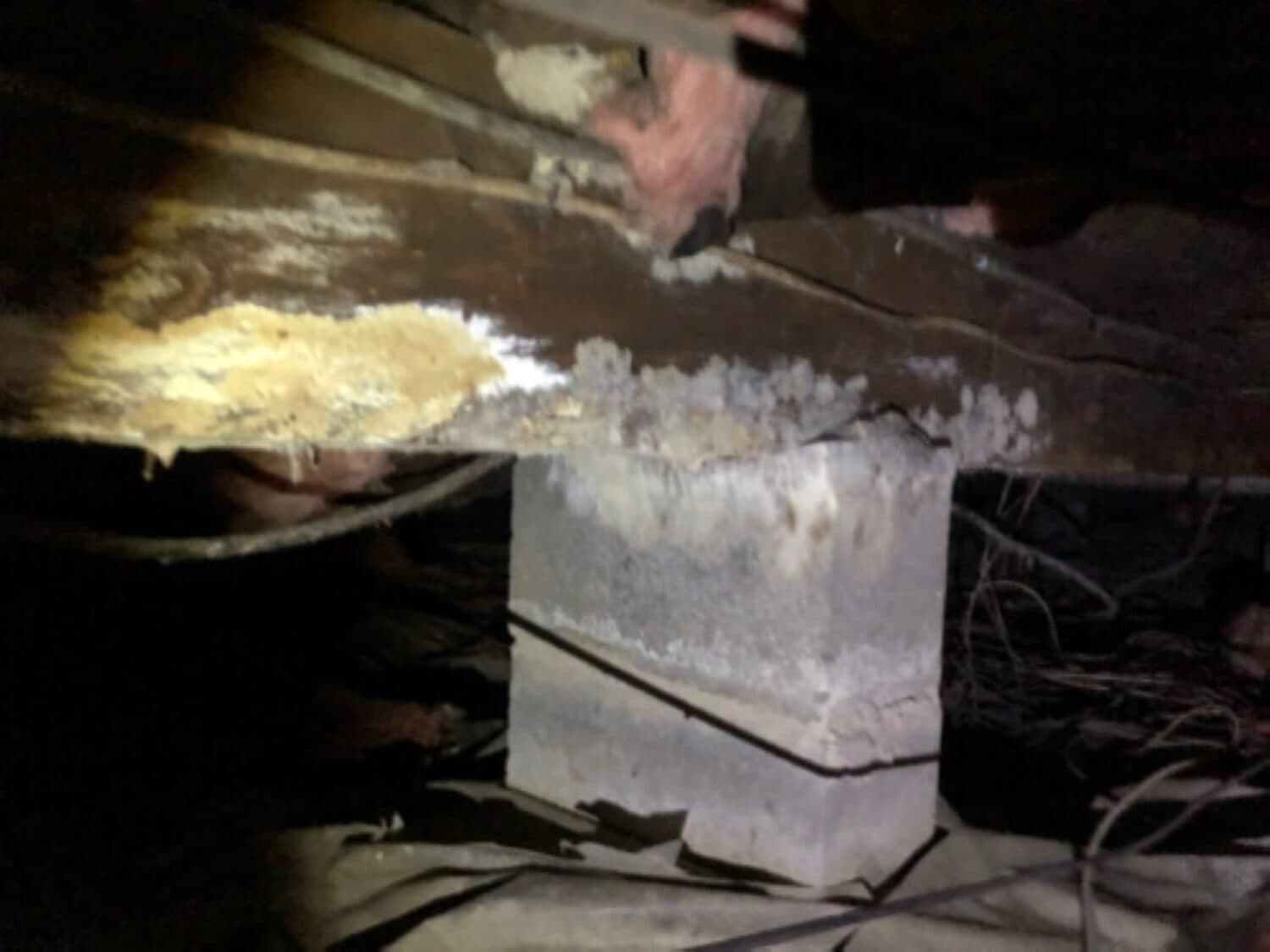Is Ventilation Required in a Crawl Space?

Originally posted 7/4/19, revised by Kelly Kater 8/20/20
The answer to this question depends on whom you ask. Some construction companies and builders will say yes; in many areas, the building code still requires them. But here at Acculevel? Experience has taught us that vents in a crawl space may not be the best solution, and can often cause the problem they were installed to prevent.
Acculevel has been waterproofing basements and crawl spaces since our founding in 1996. We’re a family-owned and operated company that services Indiana and the surrounding states. We are experts in crawl space repairs, experienced in everything from spray foam insulation to vapor barriers. It’s our goal to help homeowners understand the issues that can occur in their homes and the best ways to repair them.
In this article, we’re going to explain what happens to the air in your crawl space, why we would recommend that you seal crawl space vents, and how to make sure your home is a safe and healthy place for you and your family.
The Two Sides of the Argument
Historically, builders installed air vents in crawl spaces to allow for air circulation. They thought it would prevent the air from stagnating and developing mold. But that’s not what happened. Crawl spaces with vents still had mold. In fact, open vents not only allowed mold growth, they also promoted rusting, corrosion, and wood rot.
This is because air vents don’t dehumidify or condition the air before it enters the house. The temperature of the air outside the crawl space is often different than the air inside the crawl space. It’s this difference in temperature that creates condensation, which collects on surfaces in the crawl space- leading to the aforementioned mold, mildew, and wood rot. Vents also allow access for insects and pests. All of these intrusions are bad for your crawl space, and can have a negative impact on your home and foundation.
How Can We Be Sure?
We’ve seen the correlation in crawl spaces throughout our service area. Many of the most damaged crawl spaces are the ones with open ventilation. And there is scientific research that supports our experience. Advanced Energy is a nonprofit energy consulting firm. They work with electric utilities, government and private organizations in the residential, commercial and industrial, solar, motors and drives, and electric transportation markets. They develop innovative and practical approaches to energy issues. Working with builders and HVAC professionals, they have performed extensive studies on the effects of ventilation on crawl spaces in homes across the country. The details can be found on their website, but I will summarize them here:
| The study compared two different groups of homes with identical floor plans, under the same conditions (location, weather, age, etc) with one exception. One group had open vents in the crawl spaces, the other had sealed vents and a sealed liner. The results were clear across the board- homes with open vents had more “liquid water, moisture vapor, and fungal spores.” Researchers also tested and compared fungal species, demonstrating that vented crawl spaces were linked to high mold counts inside the living space. |
| This study has been reproduced in multiple regions, beginning with Advanced Energy’s home state of North Carolina, and extending to Baton Rouge, Louisiana and Flagstaff, Arizona. The conclusions were always the same: a sealed crawl space with no circulating air reduces humidity, helps prevent mold spores from entering your home, and reduces the likelihood of developing mold or rot. |
An Important Caveat: Encapsulation is What Makes the Difference
You will notice that the houses in the study with closed vents had a liner that sealed the crawl space. The absolute best way to protect your home, your crawl space, and your air quality is through encapsulation.
But if your crawl space has no encapsulation, or only has a vapor barrier, you should have open vents. Vapors, gases, and air continuously evaporate out of the ground; these need a way to vent out of the crawl space. Otherwise, these fumes will all rise out of the ground and make their way into your living spaces. A vapor barrier will significantly slow this evaporation, but does not prevent it.
If you have questions about waterproofing, sagging floor issues, or unpleasant odors in your crawl space, our comprehensive Crawl Space Repair Guide for Homeowners has the answers!
How Ventilation Affects the Air Quality in Your House
There are a number of factors that affect the air quality of your home, but many of them do originate in your crawl space. This is because of the stack effect: this is a term used in our industry to describe how air flow moves from the crawl space throughout the house (you may also have heard it called the ‘chimney effect’). The wooden flooring structure under your feet isn’t airtight, so air rises through it.
Your HVAC system circulates the air throughout your house. Where is it housed? Probably in your crawl space, right? It may be filtered, but it’s not sterilized. And how well it’s filtered will depend on your HVAC unit and the type of filters you can use with it. We have an article that examines the importance of air quality in a crawl space, which explores these factors in greater detail.
 This photo was taken by an Acculevel project manager during a free estimate appointment. The center beam is decaying and molding.
This photo was taken by an Acculevel project manager during a free estimate appointment. The center beam is decaying and molding.
Mold is a Problem For Everyone
If you have allergies, asthma or other respiratory ailments, you are probably familiar with the health risks of mold. But even perfectly healthy people need to be concerned about breathing in mold spores and byproducts. Studies have shown that mold in the household contributed to a number of respiratory disorders in children ages 6-12; for infants, mold exposure for babies increases their risk for developing asthma significantly. Want more information about mold and the costs of remediation? We have a blog that breaks down this process for you.
Do You Have Open Vents in Your Crawl Space?
If you do, you should check your crawl space for problem areas. And if you’re willing and able to get into your crawl space, we have a free DIY foundation inspection checklist that will guide you through the process.
But if you would prefer to have a professional evaluate your crawl space, you should find an experienced foundation company, and make an appointment. Have you made arrangements for home repairs before? If not, or if it’s been a while, we have a free checklist of questions to ask a contractor that you can use as a guide during the estimate process. This will help you compare the estimates accurately, and warn you away from any questionable business practices.
Before you sign a contract for any service, we urge you to always verify the company is reputable, insured, and accredited by the Better Business Bureau.
If you live in Indiana or the surrounding states, contact Acculevel. If you have noticed any problems and would like an evaluation, you can request a free estimate. An experienced project manager will examine the areas of concern and recommend the best course of action for you, to keep your home strong and healthy for years to come.
